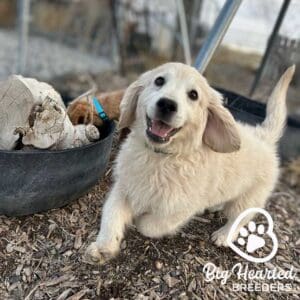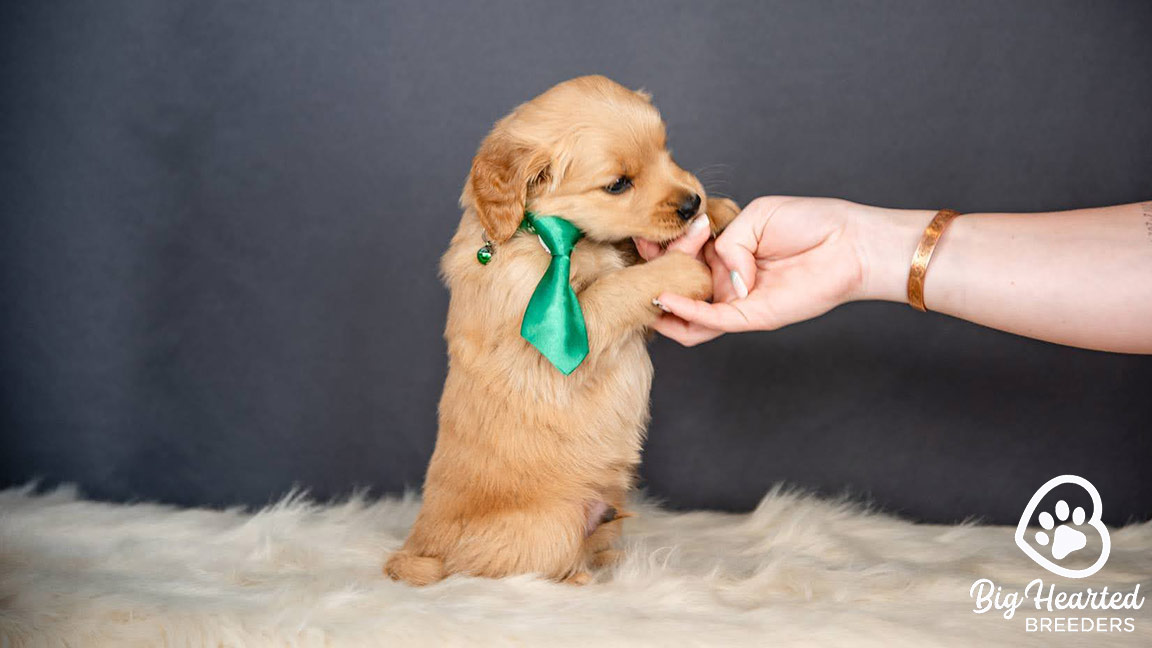Dog Paw Care: A Complete Guide for Healthy, Happy Paws
Dog Paw Care: A Complete Guide for Healthy, Happy Paws
A dog’s paws do more than just help them walk, run, and play. They’re essential for temperature regulation, balance, and protection. But despite their toughness, paws are also vulnerable to injuries, dryness, burns, and infections. That’s why dog paw care should be part of every pet owner’s routine.
At Big Hearted Breeders, we believe a healthy dog starts from the ground up, literally. In this guide, you’ll learn everything you need to know about protecting, cleaning, and maintaining your dog’s paws in every season.
Why Dog Paw Care Is Important
 Your dog’s paws are exposed to rough surfaces, hot pavement, icy sidewalks, allergens, and more. Without proper care, they can become dry, cracked, or infected, leading to pain and mobility issues.
Your dog’s paws are exposed to rough surfaces, hot pavement, icy sidewalks, allergens, and more. Without proper care, they can become dry, cracked, or infected, leading to pain and mobility issues.
Neglecting paw care can result in:
- Cracked pads
- Infections (especially between toes)
- Burns or blisters from hot surfaces
- Frostbite or ice buildup in winter
- Painful debris like thorns, salt, or splinters
By making paw care a part of your dog’s routine, you’re not just preventing problems, you’re keeping your pet comfortable, active, and safe.
How to Check Your Dog’s Paws
A good dog paw care routine starts with regular inspections. At least once a week (or after outdoor play), gently examine each paw for:
- Cuts or scrapes
- Swelling or redness
- Foreign objects between the toes
- Dry, rough, or peeling pads
- Signs of licking, chewing, or limping
Use a soft cloth to wipe away dirt or debris, and take note of any changes that persist for more than a day or two.
Daily and Weekly Dog Paw Care Tips
Here’s how to keep your dog’s paws clean, strong, and injury-free all year long.

Clean After Walks
Wipe your dog’s paws with a damp cloth or pet-safe paw wipe after walks. This removes allergens, dirt, road salt, or chemicals that can irritate or dry out the pads.
In muddy or snowy weather, rinse with warm (not hot) water and dry thoroughly between the toes.
Keep Nails Trimmed
Long nails can cause your dog’s toes to splay and lead to joint strain or uneven gait. Trim nails every 2–4 weeks or as needed, depending on how fast they grow.
If you hear clicking on hard floors, it’s time for a trim.
Moisturize the Pads
Dog pads can dry out, crack, or become rough over time, especially in hot or cold climates. Use a paw balm or dog-safe moisturizer a few times a week.
Avoid human lotions, which can soften pads too much or contain toxic ingredients.
Trim Excess Fur
If your dog has long hair between their paw pads, trim it regularly to prevent matting, ice buildup, and debris accumulation.
Use rounded-tip scissors and be careful not to nick the skin.
Inspect for Signs of Infection
Redness, swelling, a foul smell, or excessive licking can all indicate infection. If you notice any of these signs, contact your veterinarian for advice or treatment.
Seasonal Paw Care Tips

Summer Paw Protection
Hot pavement and sand can burn your dog’s pads in seconds. If you can’t comfortably place your hand or foot on the surface for 5 seconds, it’s too hot for your dog.
- Walk early in the morning or late evening
- Stick to grass or shaded paths
- Apply paw balm before walks for extra protection
- Consider dog booties if heat is unavoidable
Winter Paw Protection
Cold weather brings ice, snow, and salt, all tough on paws.
- Use paw wax or balm before and after walks
- Wash paws to remove ice melt or salt residue
- Keep the fur between pads trimmed to prevent ice balls
- Use waterproof dog boots for sensitive paws
Natural Remedies for Dry Dog Paws
If your dog’s pads are dry or cracked, here are a few safe, vet-approved options to try:
- Coconut oil (in small amounts, gently rubbed in)
- Shea butter
- Vitamin E oil
- Pet-safe paw balms made with beeswax or lanolin
Always check that products are labeled safe for dogs. Monitor your dog to prevent licking while the product absorbs.
When to See a Vet
Paw problems aren’t always surface-level. If you notice the following signs, it’s time to consult your veterinarian:
- Limping or favoring one paw
- Bleeding or deep cracks
- Swelling that lasts more than a day
- Pus, discharge, or odor
- Persistent chewing or licking
Prompt treatment can prevent more serious issues, such as infections or abscesses.

Frequently Asked Questions About Dog Paw Care
How often should I clean my dog’s paws?
Wipe or rinse your dog’s paws after every walk, especially during rainy, snowy, or muddy weather. A full inspection once a week is recommended.
Can I use human lotion on my dog’s paws?
No. Many human lotions contain ingredients that are harmful to dogs if ingested. Use only products made specifically for dogs.
Are cracked paws painful for dogs?
Yes. Cracked or dry pads can be uncomfortable and even painful. They may cause your dog to limp or avoid walking on certain surfaces.
Do dogs really need boots?
Not all dogs need boots, but they are helpful in extreme weather (hot pavement, icy sidewalks) or on rough terrain like hiking trails.
What should healthy dog paws look like?
Healthy pads should be firm, slightly rough (like leather), and free of deep cracks, redness, or debris. The nails should be short and clean, with no odor.
Final Thoughts
Caring for your dog’s paws is just as important as feeding the right food or regular vet checkups. With a simple routine, you can prevent pain, protect against the elements, and help your dog stay active and happy.
At Big Hearted Breeders, we believe in raising healthy puppies from the ground up, including strong, well-cared-for paws. Whether you’re preparing for a new puppy or taking better care of your adult dog, daily paw care is one of the best ways to show your dog love and attention.
Want more tips on dog health and care? Reach out to our team or explore more resources from our blog!





